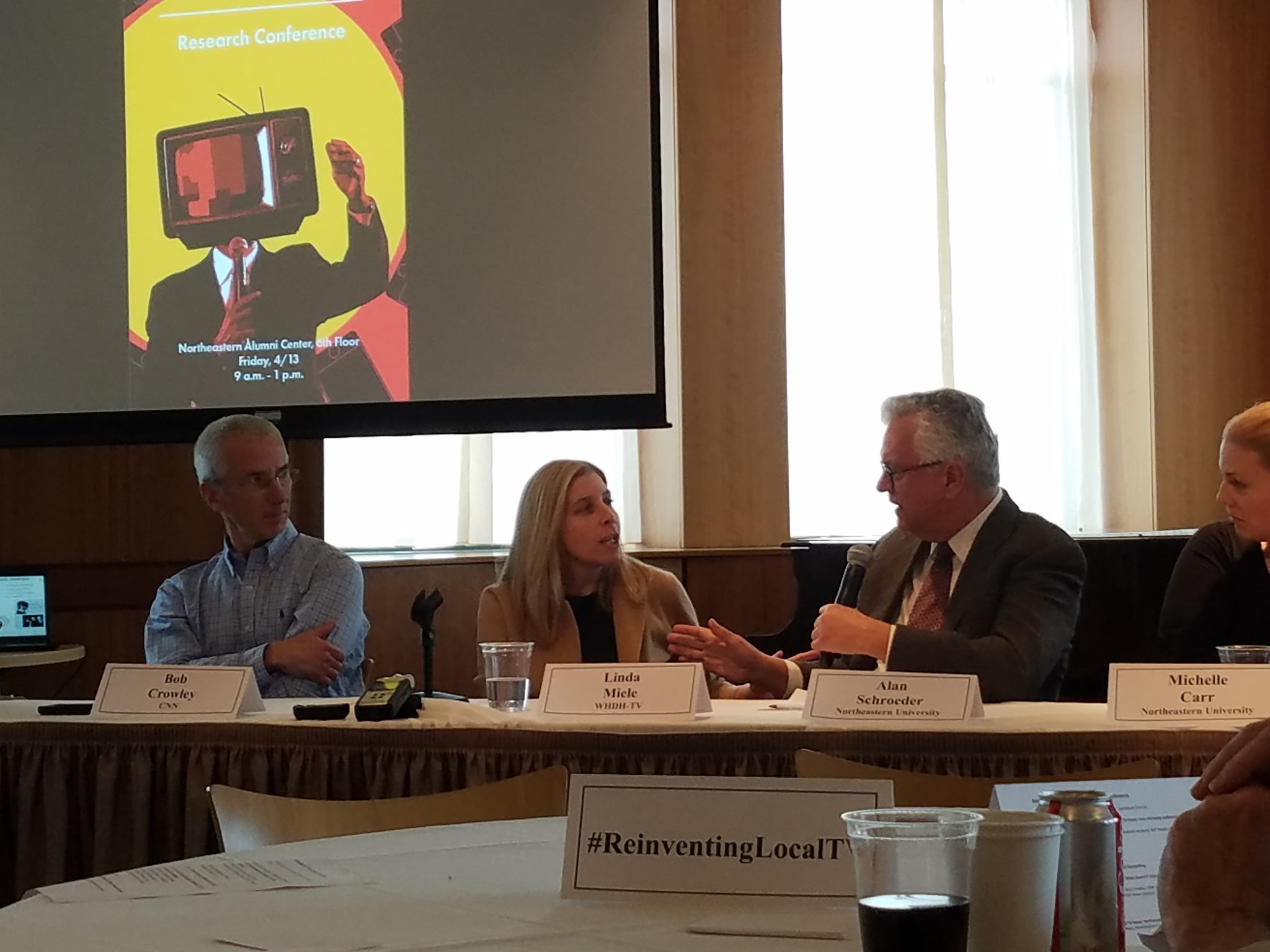Local TV news’ challenge of attracting the next generation of viewers
Bill Fine remembers driving past a billboard in Baltimore about 20 years ago that resonated with him.
On it, one of the local television news stations in the market had a new slogan that promptly captured the way local TV news was evolving in the digital age. It read: “TV has a new schedule: Yours.”
At the time, Fine was running one of the local stations in Baltimore. He’s since come to Boston, where he now is the president and general manager of Channel 5 WCVB, the highest-rated local TV news station in the city. Twenty years later, that billboard slogan has stuck with Fine because it perfectly encapsulated the future of local TV news.
Now, presidents, general managers and news directors at local TV stations around the nation, like Fine, are trying to figure out ways to attract the next generation of viewers as the digital age impacts local news.
“Control has shifted to the audience,” said Seth Geiger of SmithGeiger, an international market research and strategy firm during the Reinventing Local TV News research conference at Northeastern University.
No longer is sitting down at 5 p.m. or 6 p.m. to watch your local TV news broadcast appointment viewing. Now, especially in the 24-hour news cycle, news can be consumed whenever people want it and in virtually any form.
According to SmithGeiger, 80 percent of millennials start their day on a digital platform, while just 17 percent watch local news. That means, rather than tuning into an entire 30-minute or hour-long newscast, the next generation of viewers will simply pick and choose what stories they want to view individually by going to an app or online.
“If we’re not continuing to touch our viewers with our mobile apps, we’re going to continue to be an industry that’s waning,” Geiger said.
The millennials are an important generation of viewers that local news must find ways to appeal to because the loyal viewers of the past several decades will no longer be around 10 years from now to help keep ratings high and stations profitable.
“The people keeping us alive are the people killing us,” said Andrew Heyward, currently of the Massachusetts Institute of Technology Media Lab and former CBS News president.
What Heyward meant by that is, it’s become hard for local TV news stations to drastically shift their approach to appeal to a younger generation in fear of alienating their loyal base.
“The digital innovation and the changes, especially in (Boston), where a lot of people don’t like change – if you do anything differently you hear about it – you have to find your opportunities to do it incrementally,” Fine said. “You can’t do it wholesale.”
While it might seem like it’s all doom and gloom in the local TV news department because of how uncertain the future appears, there are still some bright spots. Even though local TV news is nowhere near as profitable as it was in the 1980s, which is considered the “Golden Years” in Boston television, local news is still making a profit.
According to Fine, WCVB is more profitable than The Washington Post and The Boston Globe, combined. That’s a local TV news station bringing in more revenue than two of the country’s top regional newspapers put together.
On top of that, according to Geiger, he’s found that 72 percent of people still engage with local TV news and that 53 percent of people trust their favorite local news station more than any other news source. Google came in at 2nd on that poll, 15 points lower than local news.
Geiger also showcased four different points that he’s found in research in how people view local TV news:
- Audiences love television
- Audiences will reward great storytelling
- Audiences have tremendous amount of trust for local news
- Local TV news delivers connection to community that’s second to none
Local news stations must find ways to attract viewers and break the mold that has become the norm for years. That could mean any number of things, like creating longer versions of stories for digital only, experimenting with different shooting techniques, or simply trusting that viewers will respond to strong, in-depth reporting over the idea that stories like accidents, crime and blood will draw eyeballs.
It’ll take work and will require innovative minds, but even if the future of local TV news isn’t necessarily “bright,” it definitely isn’t dark and gloomy, either.
“No other existing news medium has the advantages like local TV news,” said Northeastern professor Alan Schroeder.
Full conference video here:





